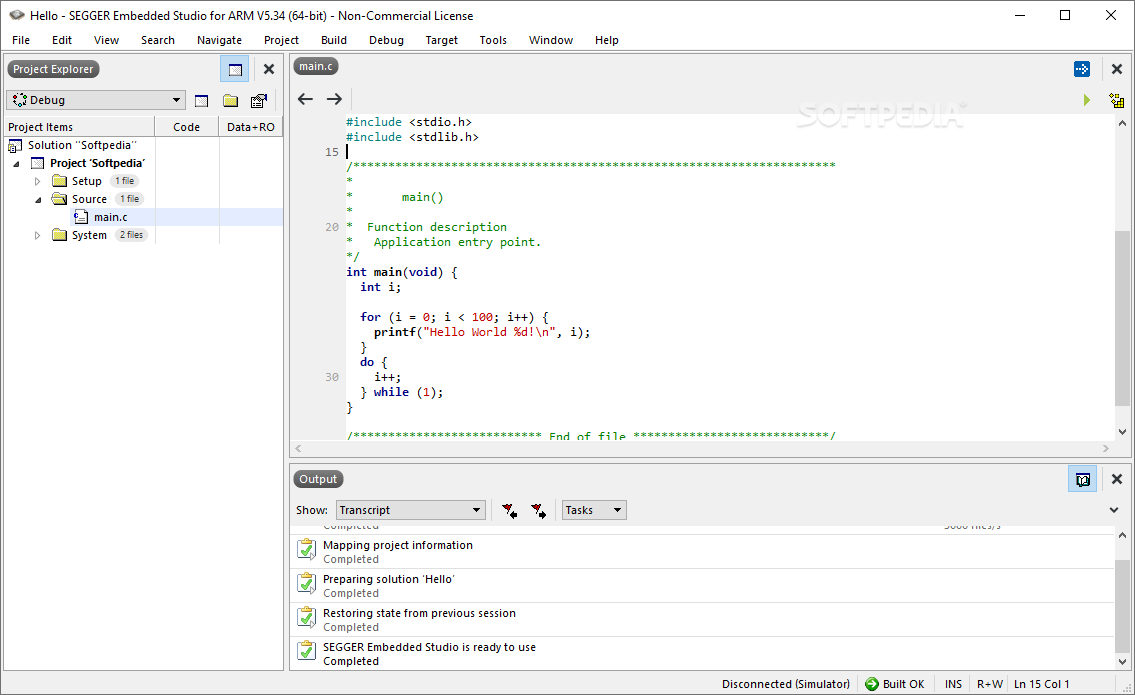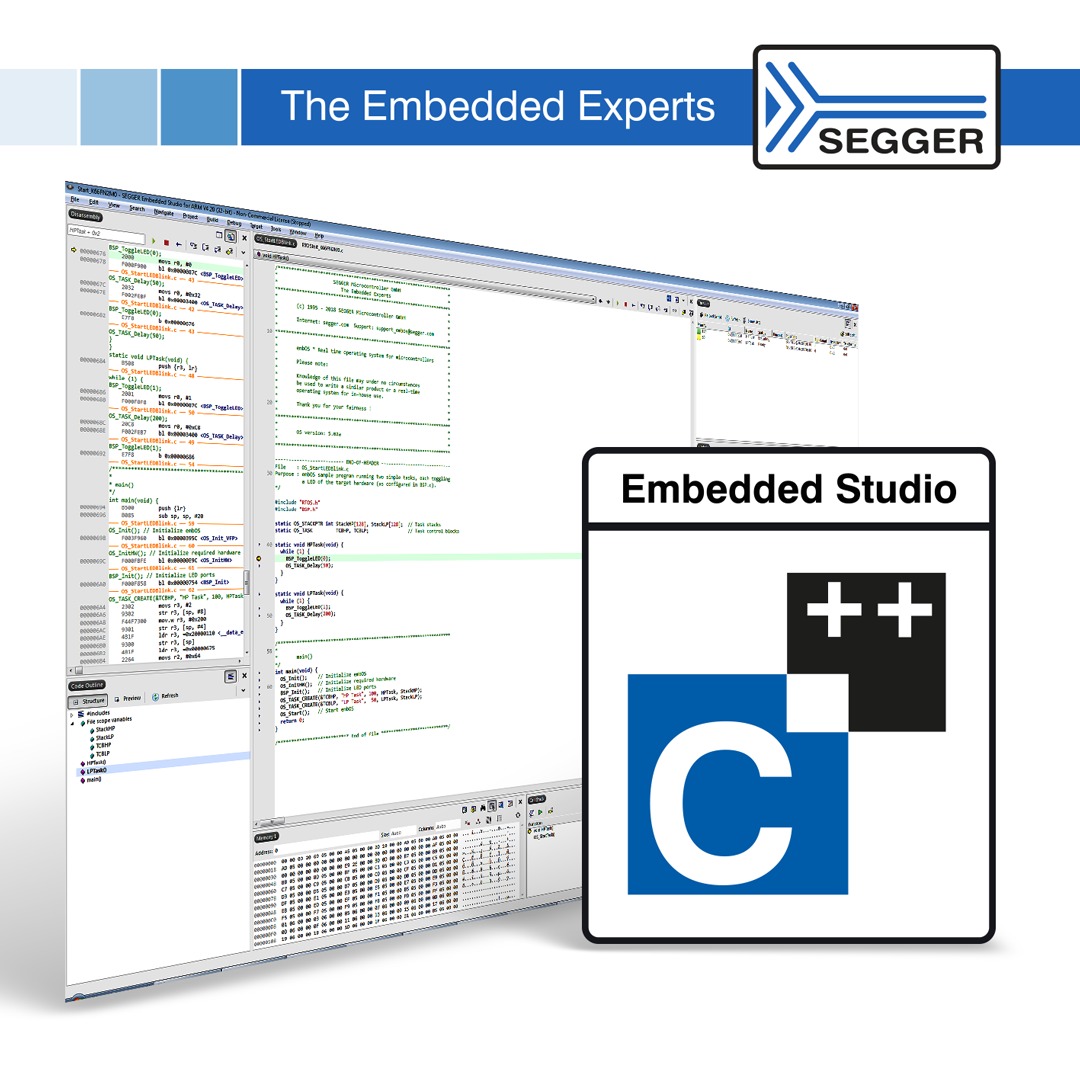

- SEGGER EMBEDDED STUDIO CSV HOW TO
- SEGGER EMBEDDED STUDIO CSV SERIAL
- SEGGER EMBEDDED STUDIO CSV FREE

This is the configuration you will see exposed on most MCUs because the user can then chose to use either protocol depending on their needs The pins are carefully assigned between the two protocols so a negotiation can take place to select the protocol that is in use.
SEGGER EMBEDDED STUDIO CSV SERIAL
Serial Wire/JTAG Debug Port (SWJ-DP) SWJ-DP is the best of both worlds and exposes an interface where JTAG or SWD can be used. Sampling of SWDIO is performed on the rising edge of the clock One pin, SWDIO, is used for input/output and the other SWCLK is used for clocking data in and out. SEGGER EMBEDDED STUDIO CSV FREE
MCUs have a small number of pins available and reducing the pin count needed for debugging means there are more GPIOs free for external sensors or that a smaller footprint package can be used. Serial Wire Debug (SWD) Port (SW-DP) - SWD was designed to reduce the number of physical pins that need to be exposed.At its core, the protocol operates on a sequence of shift registers and a fairly complex state machine to push data in / get data out This debug interface requires the MCU expose at least 4 pins and one optional pin ( DBGTRSTn). A JTAG interface is exposed in pretty much any piece of silicon and was standardized in 1990 with several revisions added over the years.
 JTAG Debug Port (JTAG-DP) - Based on the IEEE 1149.1 Standard for Test Access Port ( TAP). The DAP spec defines three different protocols which can be used to expose an interface from the Debug Port to the outside world.
JTAG Debug Port (JTAG-DP) - Based on the IEEE 1149.1 Standard for Test Access Port ( TAP). The DAP spec defines three different protocols which can be used to expose an interface from the Debug Port to the outside world. SEGGER EMBEDDED STUDIO CSV HOW TO
Data Read/Write register ( DRW) Depending on the access, contains the data to write to or read from the TARĮxtensive details about how to access the register set can be found in the ARM Debug Interface Specification 2 Debug Port External Connection Options. Transfer Address Register ( TAR) Used to control the address that will be accessed. Control/Status Word register ( CSW) Used to configure the rules to be used when performing a memory access on the AHB. The most common registers used in the AHB-AP are: The AHB-AP exposes access to this bus via several registers. The Advanced High-performance Bus ( AHB) is a bus present on ARM devices that interconnects the memory and peripherals present on the MCU. The default APs that are selected can be found in the APSEL part of the DP AP Select Register 1: On ARM Cortex-M, the MEM-AP which is typically accessed is known as the AHB-AP. The most common type of Access Port is known as the MEM-AP which exposes an interface to different Memory buses available on a given ARM chip. expose an Identification Register so a debugger can skip over it if it doesn’t understand the type. The only requirements for an AP are that they must: An Access Port exposes an interface to different parts of the MCU. 
The Debug Port can be used to configure transactions and read or write to one or more Access Ports ( AP). This is quite nice because it means reading state ( memory, registers, etc) over the DAP is pretty much the same operation regardless of the ARM MCU being used. The specification defines a set of Debug Port Registers that can be accessed to perform operations on the chip as well as the pinout a MCU needs to expose so external debuggers can attach to it. The DAP is an implementation of the ARM Debug Interface Architecture Specification 2. In this article we will explore the functionality of the DAP. This can be used to stream out data & instruction accesses while a system is running.
A subsystem that allows for traceability known as the Arm Embedded Trace Macrocell ( ETM). The subsystem used for debug, initial silicon validation, & system bringup known as the Debug Access Port ( DAP). This architecture is broken into several major components. The ARM Debugger StackĪll Cortex-M’s implement a framework known as the Coresight architecture 1. Like Interrupt? Subscribe to get our latest posts straight to your mailbox.








 0 kommentar(er)
0 kommentar(er)
